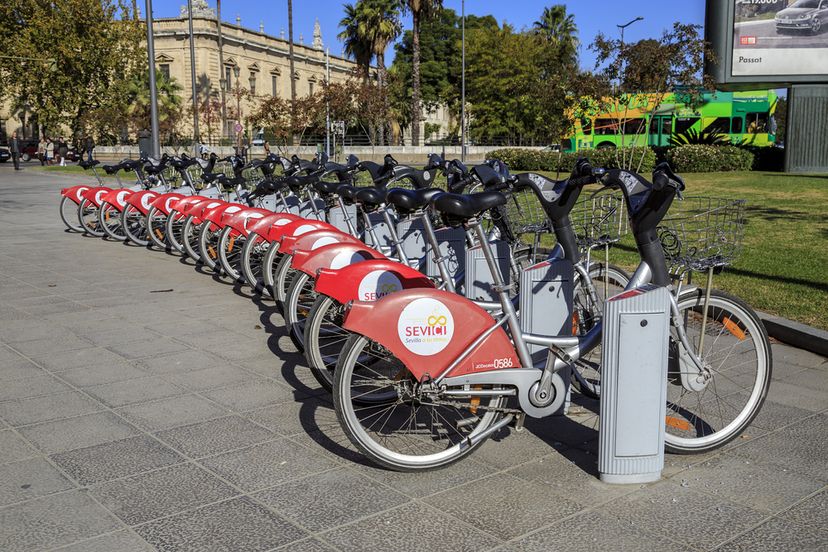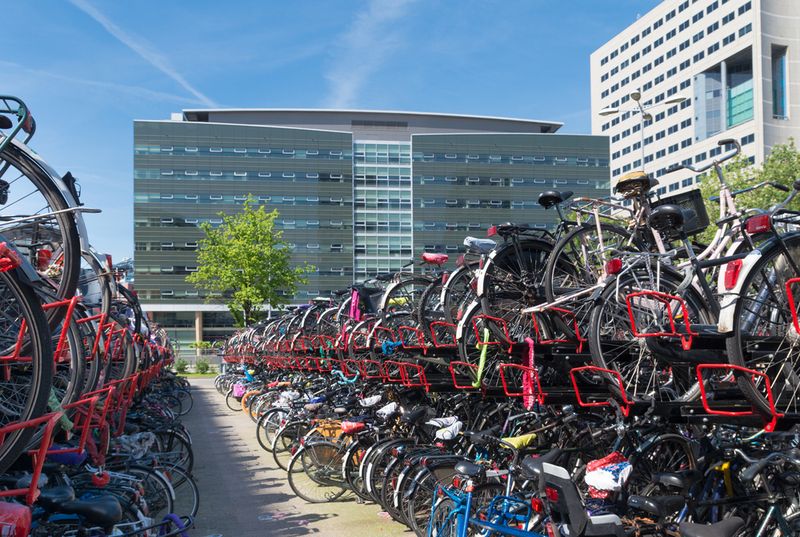
As more environmentally friendly methods of travel are being embraced throughout the world, a number of countries have begun to reinvest in one of the oldest means of travel: the bicycle. This eco-friendly outlook combined with the decrease in money consumers are willing to spend on cars has led to the bicycle making a major resurgence in urbanized areas all across the globe. With more research being done into the field, cities are now actively looking to encourage residents to leave cars at home and take to the streets on their favorite two-wheeler. Not all cities are created equal, however, and some are certainly a few notches ahead of the competition for having the most bicycle friendly city. Below is a look at 9 of the Most Bicycle Friendly Cities in the World.
Advertisement
9. Rio de Janeiro, Brazil
The privilege of hosting the 2014 World Cup and the 2016 Summer Olympics firmly places the international spotlight on both a nation, and the cities within. As a host city for both events, Rio de Janeiro has been revamping the landscape in preparations for the great number of tourists that will travel to the city. However Rio’s association with cycling can be tracked back to the Rio Climate Summit in 1992, which saw cycling tracks created along the famous Copacabana beach. This development proved to be a success, and the city now has a modest but ever-expanding network. The city has had success with a new bike share program, and while still behind the truly elite cycling cities, Rio looks to be taking the right steps toward modernizing cycling in Brazil.

8. Tokyo, Japan
As the largest city on the list, it is important to include and examine a city with the sheer size of Tokyo. Mega-cities tend to follow the trends set in other mega-cities, so Tokyo can provide an example for how to incorporate the bicycle into the densely populated urban environment. A very thorough driver training process in Japan makes the roads safer than some other major cities, which is certainly a plus for cyclists. Since public transit and cycling tend to be tied together, it should be noted as a positive that Tokyo now features a 24-hour metro service. Though the Japanese tradition of mixing cyclists with pedestrians is still alive and well, more infrastructure is being developed along roadways. Tokyo does a number of things right, and serves as a role model for mega-cities throughout the world.

7. Montreal, Canada
The premiere destination for cycling in North America, Montreal has long been ahead of the curve in the development of cycling tracks. With tracks dating back to the 1980’s, Montreal is a North American city where not only is the bicycle used for both commuting and errands, but features prominently in nightlife as well. Political advocacy plays an important factor in the development aspect of a city, and this is what has helped push Montreal to the top of North American cycling. An important step saw all of the influential players consult together to look for more efficient developments. The culture for cycling is in place in Montreal, but the city needs to take the next step to truly modernize the infrastructure in the city.

6. Malmo, Sweden
Situated so close to a number of famed bicycle cities, Sweden’s third-largest city has taken a number of measures in developing the infrastructure for cycling. Drawing inspiration from cities like Copenhagen, Malmo is looking to set an example for the rest of Sweden to follow. With major financial commitment and innovative communications, the city has demonstrated their strong desire to create a more cycling friendly culture throughout residential areas. One feature that has helped make life easier for cyclists is the seemingly minor concept of naming bike paths to make them easier to find on a GPS. Providing residents with easier access to knowledge regarding routes and pathways, alongside the new “No Ridiculous Car Trips” ad campaign has helped foster a friendlier outlook on cycling from residents. As with any new development, it will take time for Malmo to catch up with the cities ahead, but with further political emphasis, the future looks bright.

Advertisement
5. Bordeaux, France
Every country needs to have one city that is willing to step to the plate, and show what can be done with a little commitment, innovation and belief. For a number of years, Bordeaux was nothing more than an afterthought in terms of cycling in France. Sure, there were still a few cyclists in the streets, unlike other cities where bicycles had essentially disappeared. But Bordeaux has invested heavily in the creation of cycling lanes and tracks all throughout the city. There are now some 200km of bike lanes in Bordeaux, with an additional 200km when factoring in the surrounding urban area. Statistics show that the popularity of cycling is on the rise in the city, and the development of tramways should help further the progress of creating a new culture in the city. France is one of the European countries taking cycling most seriously, and Bordeaux is the leading example.

4. Seville, Spain
Seville is an excellent example of the power that bicycle planning can have. As recently as 2006, Seville was a city that had a very small percentage of the population using bicycles. Since focusing attention on cycling in the city, the rapid development saw some 80km of bike lanes created in just a year, with more added afterwards. Hand in hand with the development of the bike lanes was the creation of a bike share program, which helped fuel the growth of cycling among residents. Though Seville doesn’t have the highest percentage of riders, the clear commitment from local government is a strong indication of what the future holds for the city. The future looks bright for Seville, though cycling enthusiasts are strongly – and rightfully – worried that a nationwide mandatory helmet law would drastically cut back the growing number of cyclists in Seville.

3. Utrecht, Netherlands
Utrecht is perhaps the leading example for what cycling can be in a smaller city. In fact, there are videos of the bicycle “rush hour” online that demonstrate just how integral cycling is to the fabric of Utrecht. Some might be surprised to know that 33% of all journeys within the city are done on bicycle – in contrast to 19% of journeys being taken by car. Cycling is an accepted part of the culture for both young and old, and by individuals and families. Cycling is so popular in Utrecht in fact, that the City Council has taken steps toward developing the world’s largest bicycle parking station near the Central Railway Station. The parking station will feature room for some 12,500 bicycles, and will cost some $58-million USD to build. When thousands of bicycles are strewn haphazardly about town creating an eyesore and an obstacle course for pedestrians, it is clear why Utrecht has invested in such a large station for cyclists.

2. Copenhagen, Denmark
Every day in Copenhagen, cyclists travel an astonishing 1.1-million km. Given that 36% of residents commute to work, school or university that number starts to make a bit more sense. The city even has a goal of seeing that number rise to 50% in the year 2015. The extensive and well-used cycling paths in Copenhagen are separated from the main traffic lanes, and sometimes even feature their own signal systems providing riders a chance to turn more safely. Copenhagen is so renowned for its cycling culture that the development of bike lanes and infrastructure in other cities is measured by the term “Copenhagenize” in reference to the numerous features in the city. The next step being taken in Copenhagen is the development of greenways, aimed at developing a safe, scenic and fast way to travel from one end of the city to another.

1. Amsterdam, Netherlands
No other city does cycling quite like Amsterdam. Though the city may slightly lack in uniform infrastructure, the extreme saturation of cycling in the core of the city truly shows what cycling means to residents of Amsterdam. The widespread use of a 30km/h speed limit makes roadways much slower – and much safer – for cyclists. The political good will toward cycling in Amsterdam starts at a local level, and stretches all the way to the national government. Nowhere else in the world is cycling more accepted and embraced among the local population, which creates a relaxed and enjoyable atmosphere that is prominently mainstream. Some 38% of trips made within the greater city area are made on bicycle, and that number rises to 60% in the inner city. No city in the world is designed more to accommodate bicycles, and Amsterdam will continue to lead the way for the foreseeable future.

Advertisement